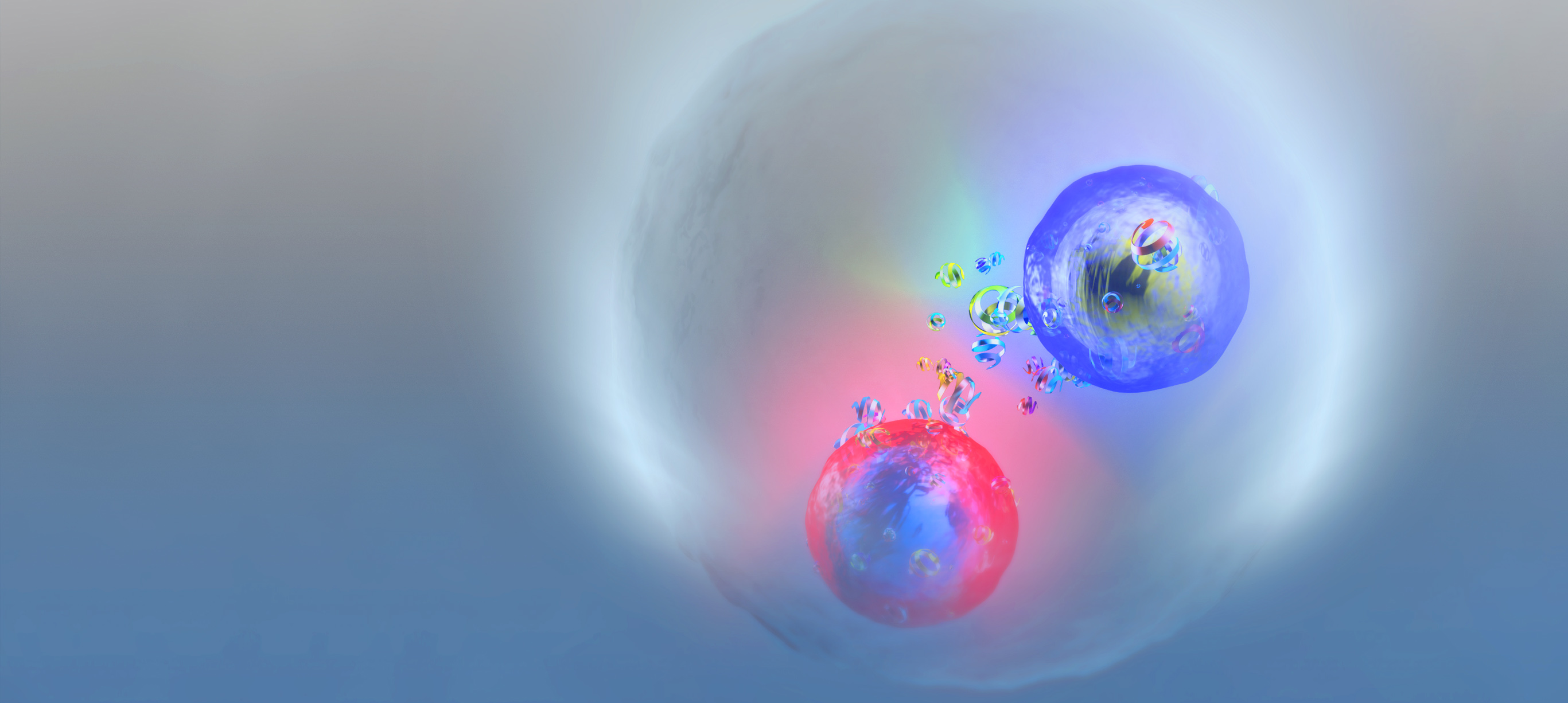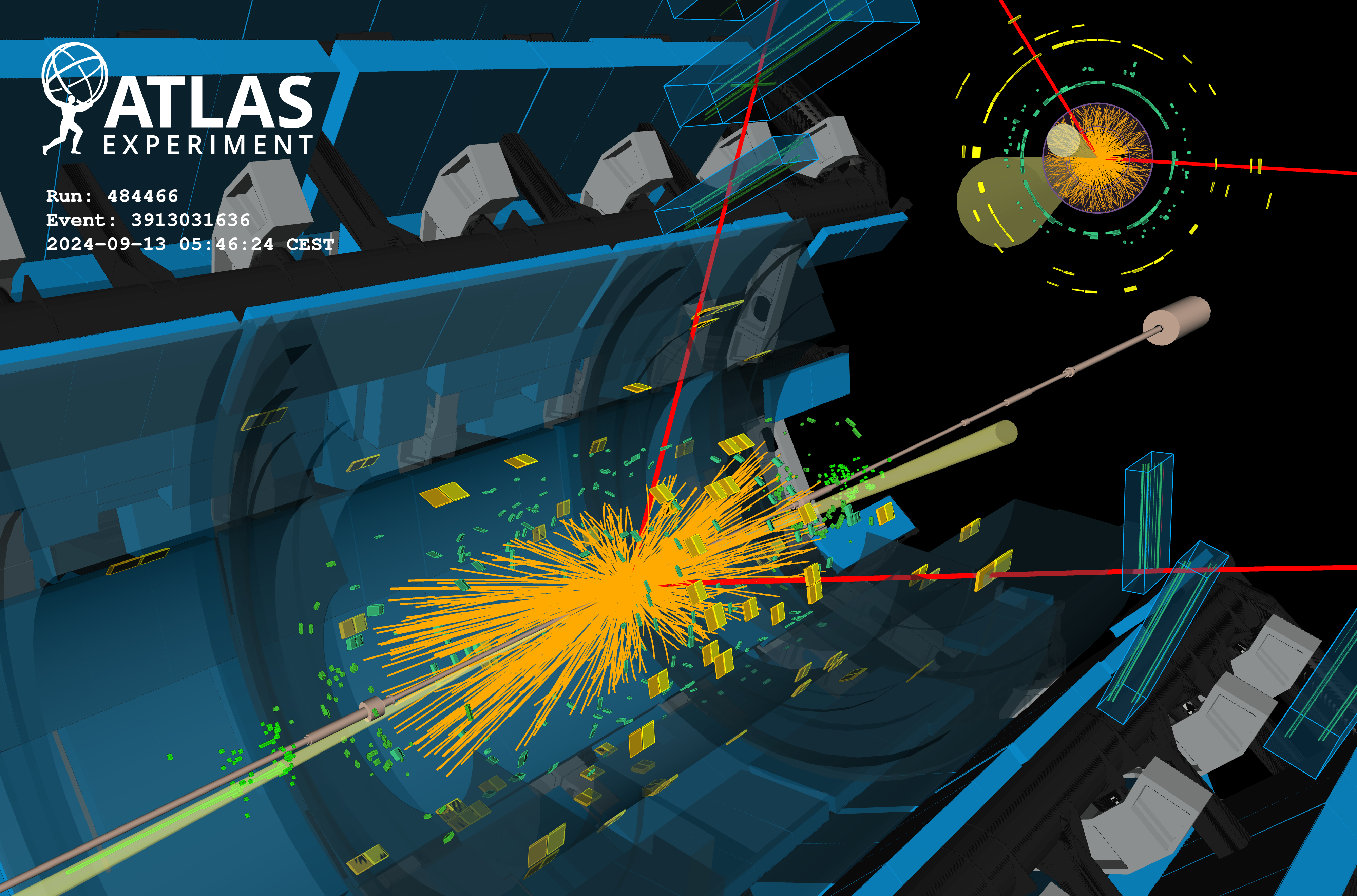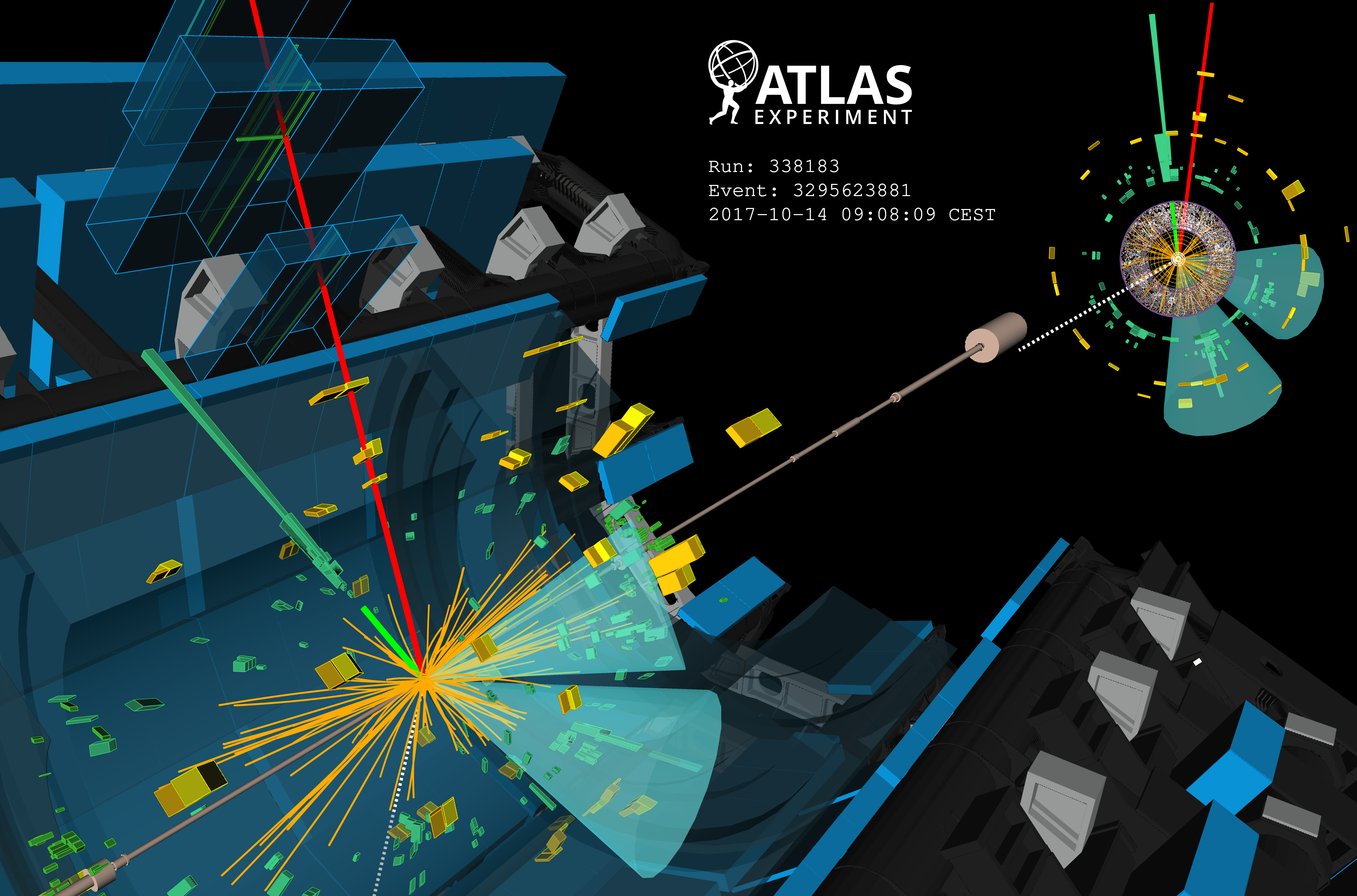ATLAS enters a new era of jet flavour tagging – powered by AI
7 July 2025 | By
Modern AI techniques are unlocking new ways to analyse particle collisions, and ATLAS is embracing the possibilities.
The most common signals produced in proton-proton collisions come from particle jets – collimated sprays of particles created when quarks or gluons transition into hadrons. Jets dominate the data collected by the ATLAS experiment, yet identifying what type, or flavour, of quark initiated a jet (jet flavour tagging) is highly challenging. This information is crucial for precise Standard Model measurements and searches for new physics phenomena.
Jets arising from a bottom or charm quark (b-jets and c-jets) have unique signatures compared to jets initiated by up, down or strange quarks or gluons (“light-jets"). They contain a high number of tracks, a fraction of which are measurably displaced from the proton-proton collision point. Jet flavour tagging takes advantage of these subtle but distinctive features. Traditionally, ATLAS physicists used algorithms aimed to reconstruct various features associated with displaced decays to then feed them into a machine-learning model that would determine the jet flavour. Now, physicists are using major advancements in artificial intelligence to upend this paradigm.

The ATLAS Collaboration has deployed GN2, a new jet flavour tagging algorithm that’s shaking up the way physicists tackle this crucial task. GN2 is powered by a Transformer, a type of neural network that allows the model to directly analyse information about the tracks and jets, thereby eliminating the need for an intermediate stage of hand-crafted algorithms for reconstructing displaced vertices (see Figure 1). While the primary goal of GN2 is to predict the flavour of a jet, it goes beyond this single task. It incorporates auxiliary training objectives aimed at identifying the underlying process that generated each track within the jet, as well as determining whether pairs of tracks originate from a common spatial point. These physics-inspired auxiliary tasks not only enhance the model’s performance in flavour tagging but also provide physicists with deeper insight into the specific physics signatures the model has learned.
GN2 brings a huge performance leap compared to its predecessor, DL1d. When compared in simulated top-quark-pair events, GN2 is three times better at rejecting c-jets and 1.6 times better at rejecting light jets – all while keeping the same level of b‑jet identification performance. More importantly, this performance improvement holds up across different jet energies and works just as well in real collision data as it does in simulated data (see Figure 2).
The ATLAS Collaboration has deployed a new jet flavour tagging algorithm – GN2 – that’s shaking up the way physicists identify particles.
Building AI into the ATLAS toolkit
Since the start of data-taking in 2010, ATLAS physicists have continuously improved the performance of jet flavour tagging algorithms, often by integrating the latest machine-learning techniques. Thanks to high-precision calibration procedures, the ATLAS flavour tagging community was able to accurately measure the performance of these algorithms in data and compare it with the expected performance in simulation, revealing a remarkable level of consistency (see Figure 3). This agreement was made possible by the vital contributions of the detector operations team, who ensure stable data-taking conditions, and the simulation team, who work continuously to make these complex simulations as realistic as possible
To keep pace with rapid advances in AI, the ATLAS flavour tagging community has now reimagined how their improvements are developed and deployed. During GN2’s development, they established flexible and robust pipelines to manage the complex integration and training of AI algorithms. These pipelines were seamlessly integrated within the ATLAS software ecosystem, dramatically speeding up the transition from development to full deployment in physics analyses.

A game-changer for ATLAS physics
GN2’s powerful new approach is already making a real difference in how ATLAS measures and explores the building blocks of matter. In the most recent di-Higgs analysis, GN2 improved the measurement of the crucial signal strength parameter by 20%. GN2 is also expected to significantly improve the sensitivity of precision studies of rare Higgs boson interactions, such as its coupling to charm quarks, which demand highly accurate identification of b-jets and c-jets. These extremely challenging measurements lie at the heart of the ATLAS Collaboration's future physics programme. Moreover, GN2 will play a key role in the search for new particles that interact preferentially with bottom and charm quarks.
A new era of jet flavour tagging has arrived, and it promises to be even more beautiful and charming than ever before!
Learn more
- Transforming jet flavour tagging at ATLAS (arXiv:2505.19689, see figures)
- Highlights of the HL-LHC physics projections by ATLAS and CMS (arXiv:2504.00672)
- Evolution of the ATLAS flavour tagging performance measured with full Run 2 dataset (FTAG-2023-07)
- Barr et al., (2024). Umami: A Python toolkit for jet flavour tagging (Journal of Open Source Software, 9(102), 5833)
- Salt, a general-purpose framework for training multi-modal, multi-task models for high energy physics
- The beauty and the charm of the Higgs boson, ATLAS Physics Briefing, 22 July 2024
- ATLAS sets record limits on Higgs self-interaction using Run 3 data, ATLAS Physics Briefing, 22 May 2025





